Let's imagine you're developing a product for a customer. Of course you want your product to be absolutely mind-blowing, so you and your whole project team are constantly working on a number of features that make the product unique. Unfortunately, not everything goes according to plan and the project is delayed. Employees are exhausted. The project is over budget. The client wanted a simple solution and everything you and your team worked on makes the product more complex. Do you think the customer is satisfied? No?
Obviously not, because you exceeded the project scope by far, took up more time, caused additional costs and, to make matters worse, you ignored the requirements of your target group.
And the moral of this story: you don't ignore the definition of the project scope in project management! You just don't!
Learn how to easily define a project scope:
What is the project scope and what isn't?
The most common problems in project management occur where project teams did not or did not clearly define the project scope. This is where uncertainty and misunderstandings arise. Then communication suffers. As long as you take enogh time to clearly define the project scope in advance, you know the requirements that are part of the project and those that are not. This may sound rather trivial, but it is absolutely essential.
First of all, keep in mind that you might come across two similar-looking but completely different concepts: product scope and project scope.
The product scope refers to all requirements that the product has to meet. It addresses the What: "What needs to be implemented in the course of the project? What does the final product contain?".
The project scope is primarily concerned with the How: "How can all those requirements be implemented?".
Both product and project scope naturally go hand in hand: the project scope cannot be described without a precise evaluation of the product scope. The product scope is therefore also part of the project scope.
Typically, all the project scope is defined in a project scope statement.
This is how the project scope statement is structured
The Project Scope Statement is used to define all project requirements in a uniform and consistent manner for all participants. These include:
Justification
If you want to carry out a project, there is usually a reason for this. A project needs its right to exist and this should be explicitly stated within the description. What needs does the project address and what problems does it have to solve?
Product scope description
The product requirements catalog is the central set of rules for each project, from which all project participants can clearly see what needs to be done and what doesn't. The description forms a framework for the project that should not be broken. It sets limits to the team in the (creative) implementation of the requirements, thus preventing the project from being jeopardized by means of a scope creep.
Acceptance criteria
How is "Done" defined? In order to be able to better follow and interpret the process later on, certain criteria must be defined, according to which it is possible to judge whether goals have been achieved or not, or whether requirements are considered "done" or not. In this process, it is also important to be aware of the wishes and expectations of the target group, which is why the acceptance criteria include aspects such as price, quality and benefits.
Objectives and Deliverables
The definition of objectives for projects is often carried out on the basis of guidelines, whereby mostly guidelines according to the SMART or CLEAR principle are used.
SMART goals must be specific, measurable, achievable and realistic, relevant and time-bound.
CLEAR-Goals must be collaborative (support team collaboration), limited (in time and scope), emotional (inspire and motivate the team), appreciable (feasible and achievable in small steps) and refinable.
Exclusions
Most of the planning is concerned with the listing of goals and requirements that are supposed to be part of the project. Equally important is to determine what the project will definitely not include. A typical example from our everyday life as software providers: Our projects aim to introduce new functions. Future updates are initially not part of our initial time-limited project.
Constraints
The magic triangle in project management - scope, time and budget - draws clear boundaries for the project. The project is defined by these three components. If one of the variables changes, the other two will inevitably change as well. For example, if the scope of the project needs to be expanded, it will require more time and/or incur additional costs due to an increased need for resources.
Assumptions
The purpose of projects is to create something new. Therefore, a project team always enters unknown territory where it can only guess at certain events and developments. The way to deal with uncertainties in project management is to make assumptions - i.e. statements that are considered true or likely. It is particularly important to record assumptions because they also indicate the risks of the project. If the team knows about the risks in early stages, they can react quickly.
The fundamental principles for defining the project scope can be easily internalized. But this is only the beginning. It is one thing to initially define the project scope. Keeping it during the project is a completely different challenge. Where are the pitfalls?
The biggest challenges in project scope management
Scope Creeps
What does it actually look like in your kitchen sink? No longer used as a sink because the plates and cups and bowls pile up? " So what? There's still room for one more thing!" This is a typical case of "Kitchen Sink Syndrome", which unfortunately is also a problem in project management. During implementation, the project scope increases further and further, uncontrolled and seemingly unstoppable. A so-called Scope Creep - and yes, it is actually also known as the Kitchen Sink Syndrome - develops and becomes a massive threat to the success of the project. Anyone who has been sloppy in identifying the requirements is almost certain to run right into one. But how can it be prevented?
Rely on clarity: Perhaps this job seems to be nothing but time consuming and tedious. However, let me tell you one thing: just do it. Keep the requirements and goals as detailed and clear as possible.
Trust in processes: Many of your ideas are reasonable, no doubt. But if you add too many new requirements, it can easily happen that you lose sight of the main goal. An idea that is worthwhile for project teams that create updated product variations: Maybe one or the other requirement is better off in the next upgraded version?
Avoide upgrade traps: Viele Deiner Ideen sind sinnvoll, keine Frage. Werden aber zu viele neue Anforderungen aufgenommen, kann es leicht passieren, das Hauptziel aus den Augen zu verlieren. Ein Gedanke, der sich für Projektteams lohnt, die erneuerte Produktvariationen schaffen: Vielleicht ist die ein oder andere Anforderung im nächsten Upgrade bzw. der nächsten Version besser aufgehoben?
Keep communication alive: Communication is crucial in so many ways: Important information regarding the project scope should be clearly communicated within the team. The team should always have access to it and it should be able to report problems as they occur. A digital communication solution simplifies many things.
I would like to learn more about what Scope Creeps are and how they can be prevented.
Missing tools
You may have helpful processes in mind and you are probably aware of all the dangers that may arise during your journey. However, if you do not have the right tool, you will not be able to react immediately. Compare project management software and choose the one that supports you best.
In this way, Stackfield will help you plan the scope of the project and execute it successfully:
Document the project scope on wiki pages
Ensure that all important information about the project - especially the project scope - is clearly defined and centrally accessible for everyone. Wiki pages provide the perfect place for this. They can be commented and provided with files and links. The versioning function helps to keep changes to the plans transparent.
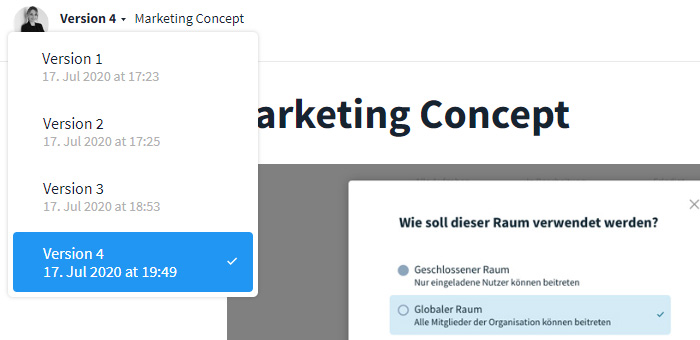
Clearly define requirements and process them with your team
All requirements can be stored within functional task cards, scheduled, assigned to one or more members and provided with all necessary information. You can create subtasks, attach files and documents, and create entries for time recording.
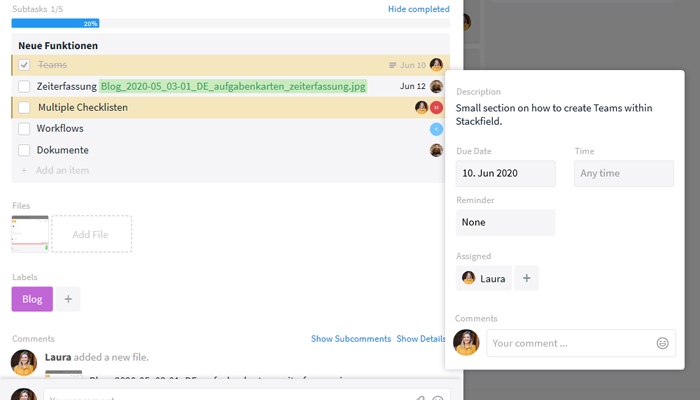
Lists provide a simple overview of all tasks. The customizable Kanban Board supports the individual workflows of your team.
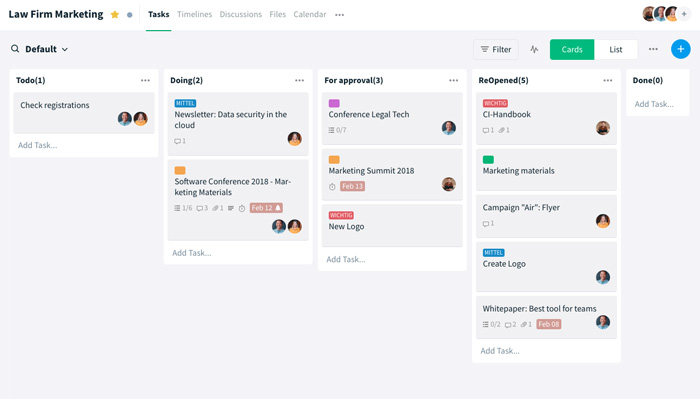
Track progress with ease
The Gantt Chart ensures that the process runs as smoothly as possible. Here you will find all tasks in their chronological sequence. You can see exactly where the project should be according to plan and where it actually is. You can highlight important intermediate goals as milestones and dependencies provide information about the extent to which changes to individual tasks will affect the entire project. This is how you are always able to react as soon as possible.
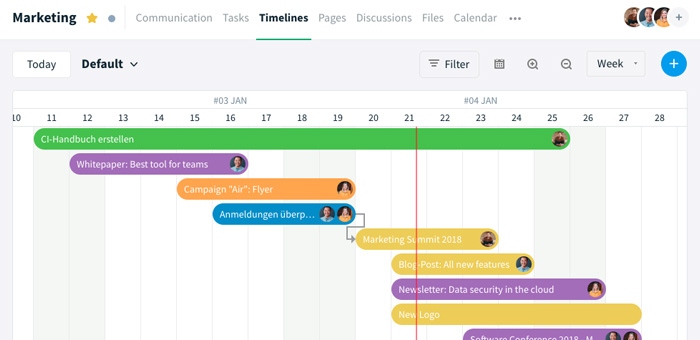
Project Rooms hold all key data about the project and various graphics that support you in tracking the project. The project-specific overview shows the current status of the project. Based on the start and end dates and taking into account the progress of the project, you can see at a glance whether the team is on schedule.
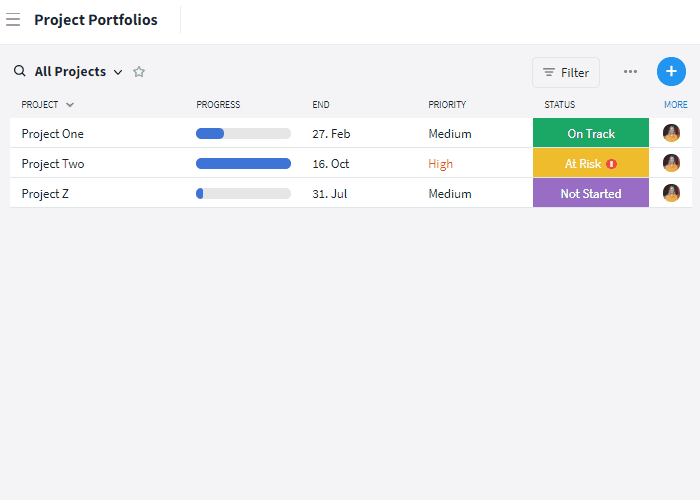
Communicate clearly and give direct feedback
The real-time chat keeps the project team up to date on all activities and news.
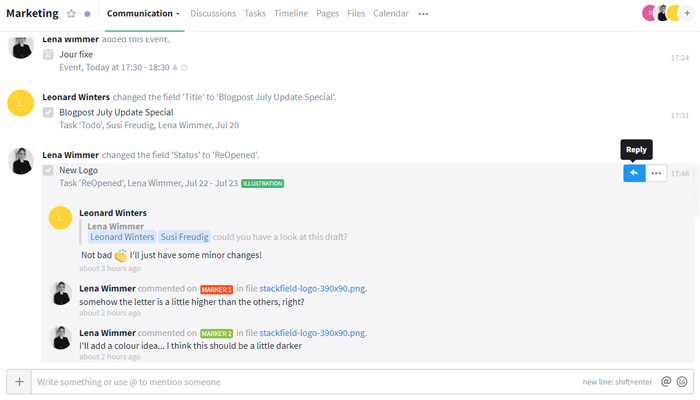
All elements can be commented individually. Together with the clever linking of the various functional modules, this ensures that information is easy to find and that communication is always topic-related. This not only facilitates project communication in general, but also remote collaboration.
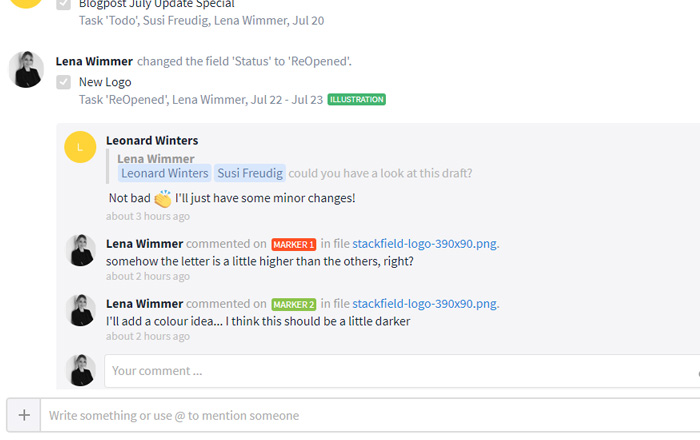
Centrally provide and share files
Files can be attached to any kind of element. At the same time they will be stored together with all other files within a room within the Files module. The marker function enables employees to discuss image contents systematically.
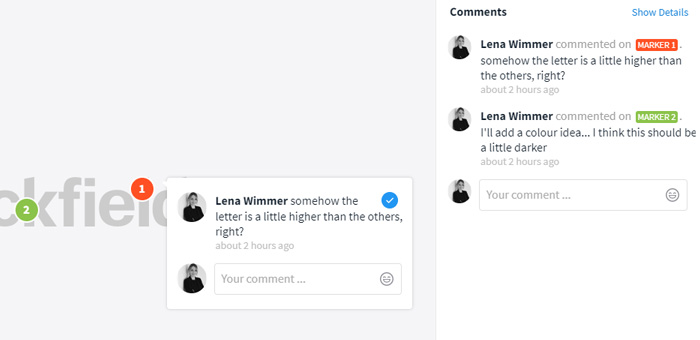
If files are attached to tasks, marker comments are listed directly in the task cards, where they can be checked off after clarification.
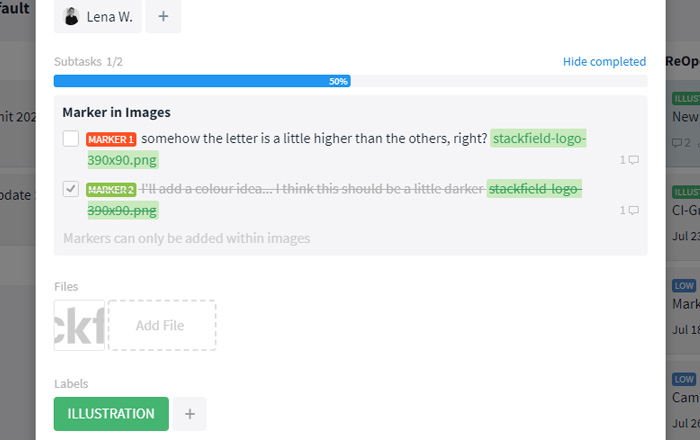
A lack of human resources
Another thing that you should think about right from the start: the team itself.
In the course of the project, it may turn out that the team lacks some professional skills. This is completely natural, because not everyone can do everything. For this reason, however, it is particularly important to define the required skill domains already in the project planning phase.
What you should definitely avoid is being forced to assign team members tasks according to their availability and not based on their personal skills.
You can best avoid this situation by assembling the project team carefully in advance. Find the perfect person for each skill domain. If there are gaps, you need to strengthen the skills of your employees. Do not hesitate to offer training and further education. Employees are happy about the opportunity and the company will benefit sustainably from it in future projects.
What have we learned about the project scope?
There is one main conclusion we can draw: If you spend more time on planning at the beginning, you can probably save a lot of time later on in the project. A well-defined scope significantly increases the probability that the project will prove successful in the end. And to come back to the kitchen sink: Make piling plates an end!